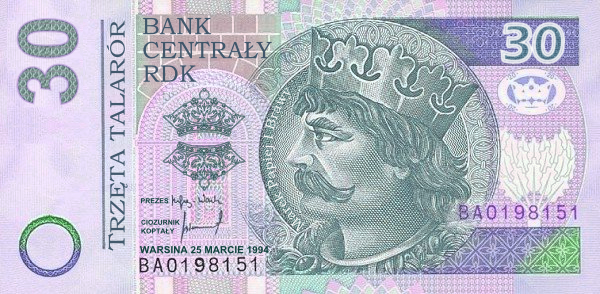PĘDRA, MIOZERZE I WALUTA
Weights, measures and currency
The Republic of the Two Crowns has a way of making things more complicated than they actually need to be.
One example is the existence of two different standards for Weights and Measures.
Measures of Length
When it comes to measures of lengh, the RTC uses two different systems simulaneously: its own traditional
system and the Système International.
The traditional Venedic system looks as follows:
| Name | | Decimal equivalent | Etymology |
|---|
| 1 mila wenedka | = ± 1,890 przotkar = ± 28,330 piedziór | [8,634 m] | Latin MILLE PASSUUM |
| 1 stadz | = ± 233 przotcze = ± 3,500 piedziór | [1,066 m] | Latin STADIUM |
| |
| 1 przotka | = 15 piedziór = 180 węczar | [457.20 cm] | Latin PERTICA |
| 1 cięza | = 6 piedziór = 72 węczar | [182.88 cm] | Latin TENSA |
| 1 wółna | = 2 piedzie = 24 węczar | [ 60.96 cm] | Latin ULNA |
| 1 piedź | = 12 węczar | [ 30.48 cm] | Latin PES |
| 1 man | = 4 węcze | [ 10.16 cm] | Latin MANUS |
| 1 węcza | | [ 2.54 cm] | Latin UNCIA |
Of course, the fact that both systems use the same names can make things hopelessly complicated, especially for
people who are not used to that. But it is always good to keep in mind that every inhabitant of the Republic perfectly
knows his way in that jungle. It's quite miraculous, and almost impossible to grasp how they do it, but somehow they
manage! If you drive from Kordyn to Warsina, it's possible that you first see a sign "Warsina - 80 miles" and then,
after a while, "Warsina - 100 miles", but the only ones who ever get confused about such things are the foreigners!
Currency
Together with the other Baltic countries and the Scandinavian Realm, the RTC belongs to a monetary union, known as "Baltic Currency Union". As a result, the RTC has a dual monetary system, based on the distinction between specie and current. Species are fixed and their values remain fixed for hundreds of years. The Baltic League has essentially two of them: the Riksdaler specie which is used in the Scandinavian countries and in Nassland, and the specietaler in the East Baltic countries and the RTC. Their values are not the same, but fixed to each other.
In addition to that, each country has its own current currency, the value of which is fixed in relation to the specie. In other words, two parallel coinage systems are in each country; the specie, and the current. Efforts to decide on a common agio rate for all members of the League (which would enable people to use the current currency of one country in another) have not succeeded yet, although it remains high on the agenda of its members states.
Agio in the RTC is set on + ⅕. On other words, 1 specietaler = 1.2 talar courant.
As for the current system, the basic denominations are the following:
| 1 talar (Ŧ) | = | 30 groszór | = | 90 soldór | = | 540 dzienarzór (đ) | (in Veneda) |
| 1 taleriai (Ŧ) | = | 30 grašiai | = | 90 variokai | = | 540 dinarai (đ) | (in Lithuania) |
| 21⅓ talars to the mark of fine silver (180 gr silver) |
 | | 30 talar banknote (by Jakub Marcin Zając) |
The following coins and banknotes are in circulation:
Coins (current):
⅓ dzienarz, 1 dzienarz, 3 dzienarze ("trzedziemiedzyk"), 9 dzienarzór;
1 sold;
1 grosz, 3 grosze, 6 groszór ("szostarz"), 18 groszór ("tymf");
⅓ talar, 1 talar ("urzy");
6 talar ("urzy rubry, rykstalar", a former trade coin, nowadays only a commemorative coin).
Coins (specie):
⅓ talar śp., 1 talar śp., 5 talar śp. ("urzy jan").
Banknotes (current):
1 talar, 3 talarze, 9 talarór, 30 talarór, 90 talarór, 300 talarór.
This system tends to be very confusing for foreigners, and also, occasionally, for Veneds and Lithuanians. Note that the actual value of 1 sold is 6 dzienarzór, while the value of ⅓ talar is 10 groszór. In other words, Ŧ1⅓/6/1/5 is exactly the same price as Ŧ1/16/–/11 or Ŧ1/–/–/299 . Needless to add that Venedic shopkeepers are true masters in manipulating their prices in such way that things appear cheaper than they actually are!
In prices, the soldzie are often omitted: if something costs you Ŧ2/20/15 that means that you owe 2 talars, 20 grosze and 15 dzienarze, which you can of course also pay as 2⅔ talars, 2 soldzie and 3 dzienarze, etc.
|